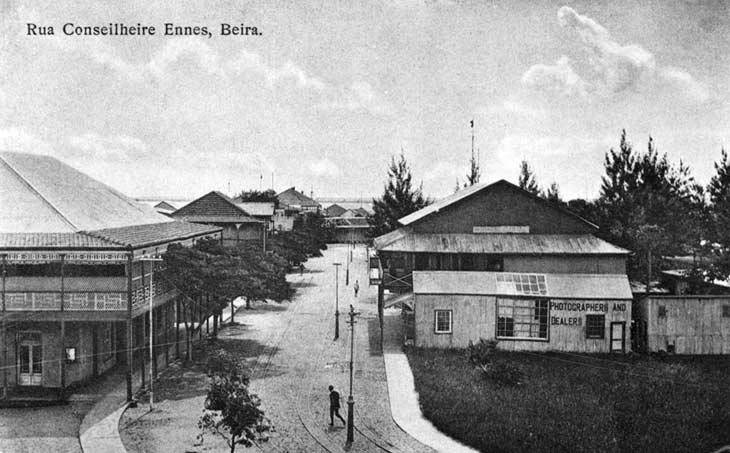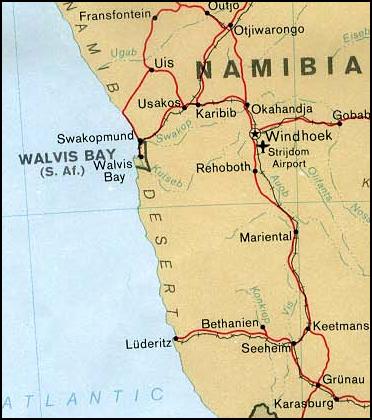|
Beira–Lobito Highway
The Beira–Lobito Highway or TAH 9 is Trans-African Highway 9 in the transcontinental road network being developed by the United Nations Economic Commission for Africa (UNECA), the African Development Bank (ADB), and the African Union. The route has a length of crossing Angola, the most southerly part of the Democratic Republic of the Congo, Zambia, Zimbabwe, and central Mozambique. It is substantially complete in its south-eastern half where it uses paved national roads of Zambia, Zimbabwe and Mozambique, but the western half through most of Angola and DR Congo consists of earth tracks or formerly paved roads requiring reconstruction. The route links mining areas of DR Congo, Zambia and Zimbabwe and agricultural production areas of Angola, Zambia and Zimbabwe to the Atlantic port of Lobito and Indian Ocean port of Beira. Civil wars in Angola, DR Congo, Zimbabwe and Mozambique have affected development of the highway in the past, most recently in DR Congo and ... [...More Info...] [...Related Items...] OR: [Wikipedia] [Google] [Baidu] |
Beira, Mozambique
Beira is the capital and largest city of Sofala Province, where the Pungwe River meets the Indian Ocean, in the central region of Mozambique. It is the fourth-largest city by population in Mozambique, after Maputo, Matola and Nampula. Beira had a population of 397,368 in 1997, which grew to 530,604 in 2019. A coastal city, it holds the regionally significant Port of Beira, which acts as a gateway for both the central interior portion of the country as well as the land-locked nations of Zimbabwe, Zambia and Malawi. Originally called Chiveve after a local river, it was renamed Beira to honour the Portuguese Crown prince Dom Luís Filipe (titled Prince of Beira, itself referring to the traditional Portuguese province of Beira), who had visited Mozambique in the early 1900s. It was first developed by the Portuguese Mozambique Company in the 19th century, supplanting Sofala as the country's main port. It was then directly developed by the Portuguese colonial government from 1947 until ... [...More Info...] [...Related Items...] OR: [Wikipedia] [Google] [Baidu] |
Indian Ocean
The Indian Ocean is the third-largest of the world's five oceanic divisions, covering or ~19.8% of the water on Earth's surface. It is bounded by Asia to the north, Africa to the west and Australia to the east. To the south it is bounded by the Southern Ocean or Antarctica, depending on the definition in use. Along its core, the Indian Ocean has some large marginal or regional seas such as the Arabian Sea, Laccadive Sea, Bay of Bengal, and Andaman Sea. Etymology The Indian Ocean has been known by its present name since at least 1515 when the Latin form ''Oceanus Orientalis Indicus'' ("Indian Eastern Ocean") is attested, named after India, which projects into it. It was earlier known as the ''Eastern Ocean'', a term that was still in use during the mid-18th century (see map), as opposed to the ''Western Ocean'' ( Atlantic) before the Pacific was surmised. Conversely, Chinese explorers in the Indian Ocean during the 15th century called it the Western Oceans. In Anc ... [...More Info...] [...Related Items...] OR: [Wikipedia] [Google] [Baidu] |
South Africa
South Africa, officially the Republic of South Africa (RSA), is the southernmost country in Africa. It is bounded to the south by of coastline that stretch along the South Atlantic and Indian Oceans; to the north by the neighbouring countries of Namibia, Botswana, and Zimbabwe; and to the east and northeast by Mozambique and Eswatini. It also completely enclaves the country Lesotho. It is the southernmost country on the mainland of the Old World, and the second-most populous country located entirely south of the equator, after Tanzania. South Africa is a biodiversity hotspot, with unique biomes, plant and animal life. With over 60 million people, the country is the world's 24th-most populous nation and covers an area of . South Africa has three capital cities, with the executive, judicial and legislative branches of government based in Pretoria, Bloemfontein, and Cape Town respectively. The largest city is Johannesburg. About 80% of the population are Black S ... [...More Info...] [...Related Items...] OR: [Wikipedia] [Google] [Baidu] |
Botswana
Botswana (, ), officially the Republic of Botswana ( tn, Lefatshe la Botswana, label= Setswana, ), is a landlocked country in Southern Africa. Botswana is topographically flat, with approximately 70 percent of its territory being the Kalahari Desert. It is bordered by South Africa to the south and southeast, Namibia to the west and north, and Zimbabwe to the northeast. It is connected to Zambia across the short Zambezi River border by the Kazungula Bridge. A country of slightly over 2.3 million people, Botswana is one of the most sparsely populated countries in the world. About 11.6 percent of the population lives in the capital and largest city, Gaborone. Formerly one of the world's poorest countries—with a GDP per capita of about US$70 per year in the late 1960s—it has since transformed itself into an upper-middle-income country, with one of the world's fastest-growing economies. Modern-day humans first inhabited the country over 200,000 years ago. The Tswana ... [...More Info...] [...Related Items...] OR: [Wikipedia] [Google] [Baidu] |
Namibia
Namibia (, ), officially the Republic of Namibia, is a country in Southern Africa. Its western border is the Atlantic Ocean. It shares land borders with Zambia and Angola to the north, Botswana to the east and South Africa to the south and east. Although Kazungula, it does not border Zimbabwe, less than 200 metres (660 feet) of the Botswanan right bank of the Zambezi, Zambezi River separates the two countries. Namibia gained independence from South Africa on 21 March 1990, following the Namibian War of Independence. Its capital and largest city is Windhoek. Namibia is a member state of the United Nations (UN), the Southern African Development Community (SADC), the African Union (AU) and the Commonwealth of Nations. The driest country in sub-Saharan Africa, Namibia has been inhabited since pre-historic times by the San people, San, Damara people, Damara and Nama people. Around the 14th century, immigration, immigrating Bantu peoples arrived as part of the Bantu expansion. Since ... [...More Info...] [...Related Items...] OR: [Wikipedia] [Google] [Baidu] |
Walvis Bay
Walvis Bay ( en, lit. Whale Bay; af, Walvisbaai; ger, Walfischbucht or Walfischbai) is a city in Namibia and the name of the bay on which it lies. It is the second largest city in Namibia and the largest coastal city in the country. The city covers a total area of of land. The bay is a safe haven for sea vessels because of its natural deepwater harbour, protected by the Pelican Point sand spit, being the only natural harbour of any size along the country's coast. Being rich in plankton and marine life, these waters also drew large numbers of southern right whales, attracting whalers and fishing vessels. A succession of colonists developed the location and resources of this strategic harbour settlement. The harbour's value in relation to the sea route around the Cape of Good Hope had caught the attention of world powers since it was discovered by the outside world in 1485. This explains the complicated political status of Walvis Bay down the years. The town is situated j ... [...More Info...] [...Related Items...] OR: [Wikipedia] [Google] [Baidu] |
Maputo Corridor
The Maputo Corridor is a major trade corridor which connects the Gauteng, Limpopo, and Mpumalanga provinces of South Africa with Maputo, which is a port and the capital of Mozambique. The corridor comprises roads - including the N4 toll road (from Pretoria to Komatipoort) - and railways, ports, and border facilities at Komatipoort, which connect the industrial areas around Gauteng, and mines and agricultural districts to the east, with ports on the Mozambique coast. Maputo and Matola are both deepwater ports. Transport organisations and border control agencies are cooperating to improve transport and lower barriers to trade. History The corridor was first planned in 1994, as a rehabilitation project for disused transport links. Since then, the project has broadened, new parties have become involved, and over $5 billion invested. Participants * Caminhos de ferro do Moçambique * The government of Eswatini has also joined the project. * Transnet Freight Rail Transnet Freight ... [...More Info...] [...Related Items...] OR: [Wikipedia] [Google] [Baidu] |
Trans-Kalahari Corridor
The Trans-Kalahari Corridor is a paved highway corridor that provides a direct route from Walvis Bay and Windhoek in central Namibia, through Botswana, to Pretoria in Gauteng province in South Africa. It initially cost approximately 850 million Namibian dollars (US$115 million) and was officially opened in 1998. The corridor also includes railway lines from Walvis Bay as far as Gobabis in Namibia, and from Johannesburg as far as Lobatse in Botswana. Connecting the two railway lines has been discussed since 2010, and an agreement between the two countries was signed in 2014, but the project has since become economically unfeasible. The Maputo Corridor provides an onwards connection from Gauteng to Maputo in Mozambique. Together these corridors form a unique road connection between Walvis Bay on the Atlantic and Maputo on the Indian Ocean; the connected regions are also known as the Walvis Bay–Botswana–Gauteng–Maputo development corridor. Route The route Walvis Bay–Windhoe ... [...More Info...] [...Related Items...] OR: [Wikipedia] [Google] [Baidu] |
Southern African Development Community
The Southern African Development Community (SADC) is an inter-governmental organization headquartered in Gaborone, Botswana. Its goal is to further regional socio-economic cooperation and integration as well as political and security cooperation among 16 countries in southern Africa. Member states As of 2022, the SADC has a total of 16 member states: Burundi has requested to join. The origin and history of the SADC The origins of SADC are in the 1960s and 1970s, when the leaders of majority-ruled countries and national liberation movements coordinated their political, diplomatic and military struggles to bring an end to colonial and white-minority rule in southern Africa. The immediate forerunner of the political and security cooperation leg of today's SADC was the informal Frontline States (FLS) grouping. It was formed in 1980. The Southern African Development Coordination Conference (SADCC) was the forerunner of the socio-economic cooperation leg of today's SAD ... [...More Info...] [...Related Items...] OR: [Wikipedia] [Google] [Baidu] |
Kapiri Mposhi
Kapiri Mposhi is a Zambian town, seat of the Kapiri Mposhi District, Central Province. Located north of Lusaka, it stands on the Great North Road and is significant for the railway connection between Zambia Railways line from Kitwe to Lusaka and Livingstone and western terminal (New Kapiri Mposhi) of the Tanzania-Zambia Railway Authority from Dar es Salaam since 1976. Geography The town lies in the middle of Zambia, next to the borders with Copperbelt Province. The town is approximately 60 km north of Kabwe and 110 km south of Ndola. It is situated at the junction of the T2 road ( Great North Road; which connects south to Kabwe and Lusaka and north-east to Mpika and Tanzania) and the T3 road (which connects north to Ndola, Kitwe, Chingola and the Democratic Republic Of Congo). Kapiri Mposhi District covers an area measuring approximately 18,250 square kilometres. It is surrounded by 8 Districts, namely, Kabwe District to the south, Chisamba District to the south-east, ... [...More Info...] [...Related Items...] OR: [Wikipedia] [Google] [Baidu] |



